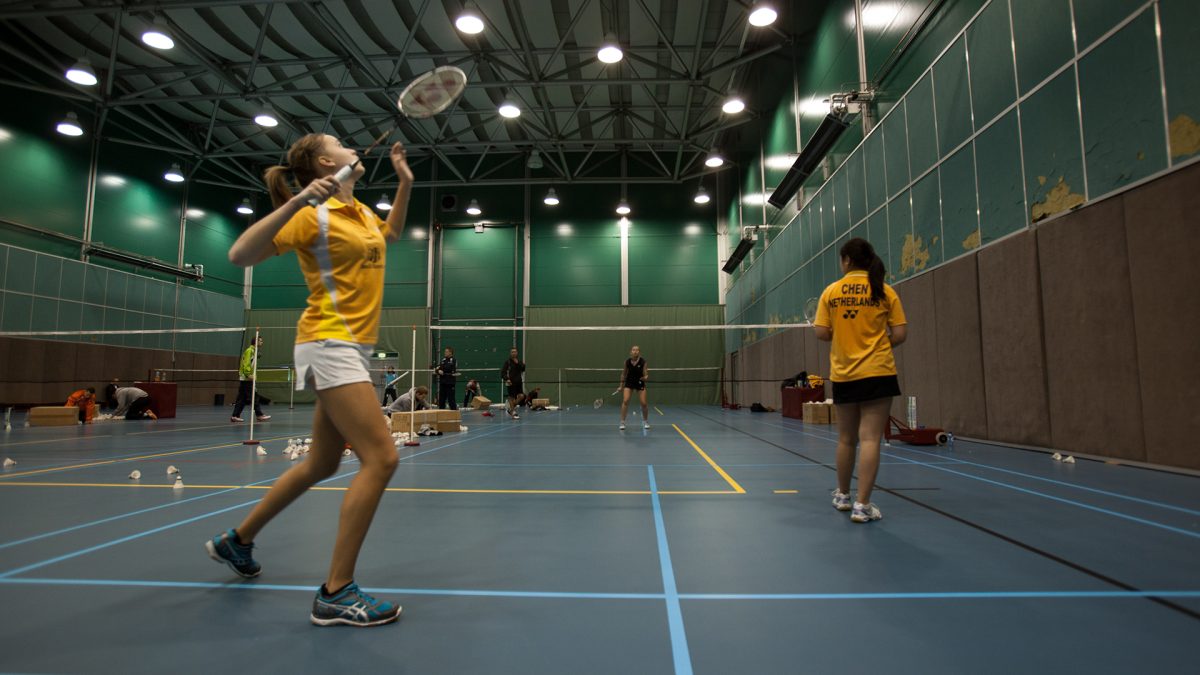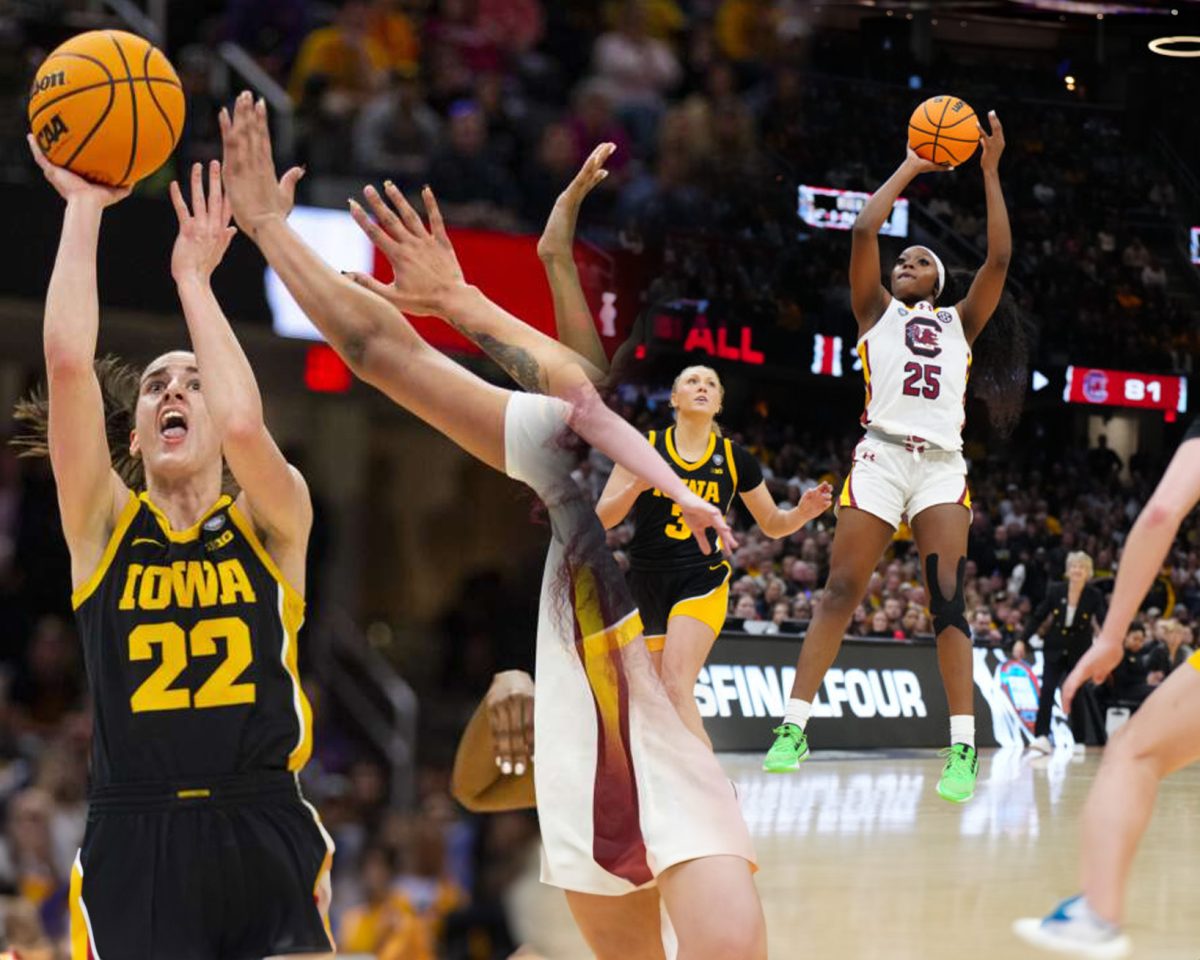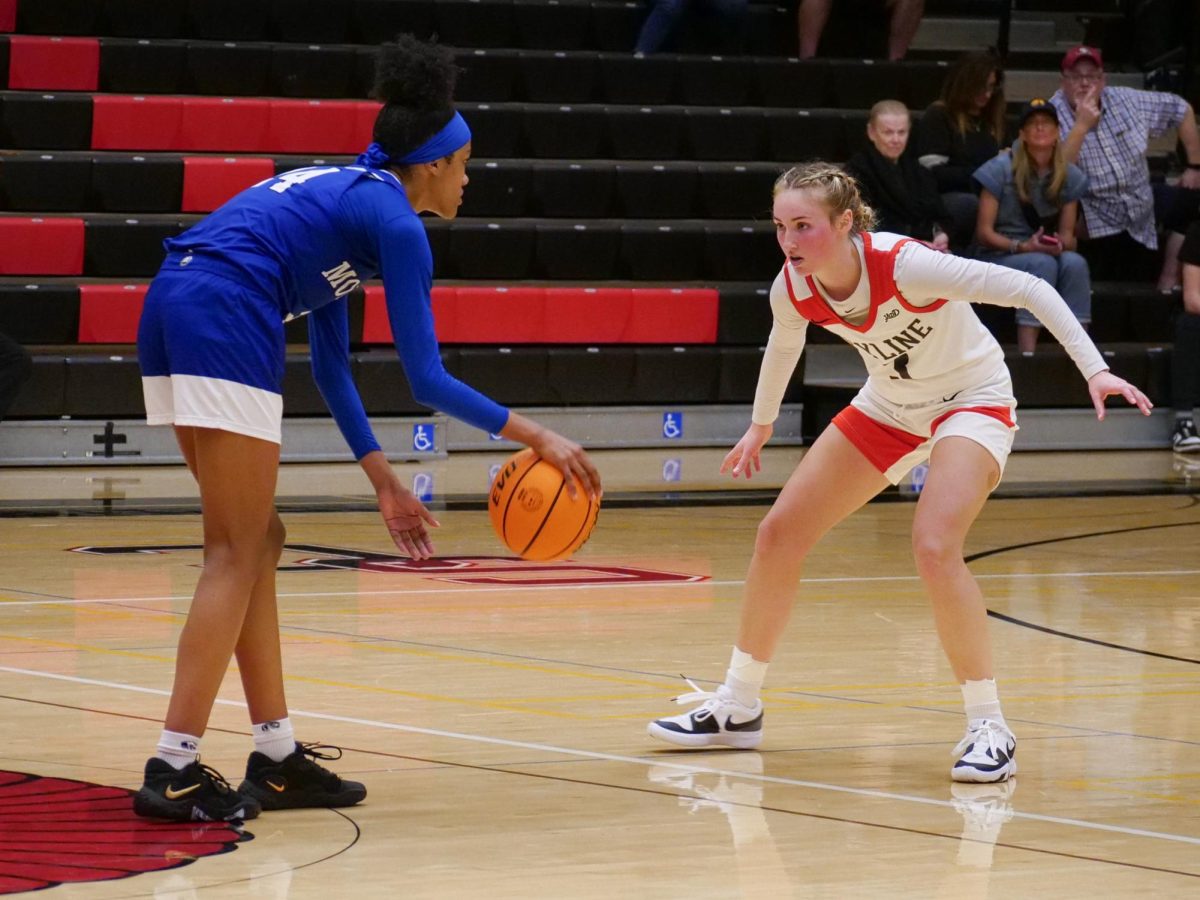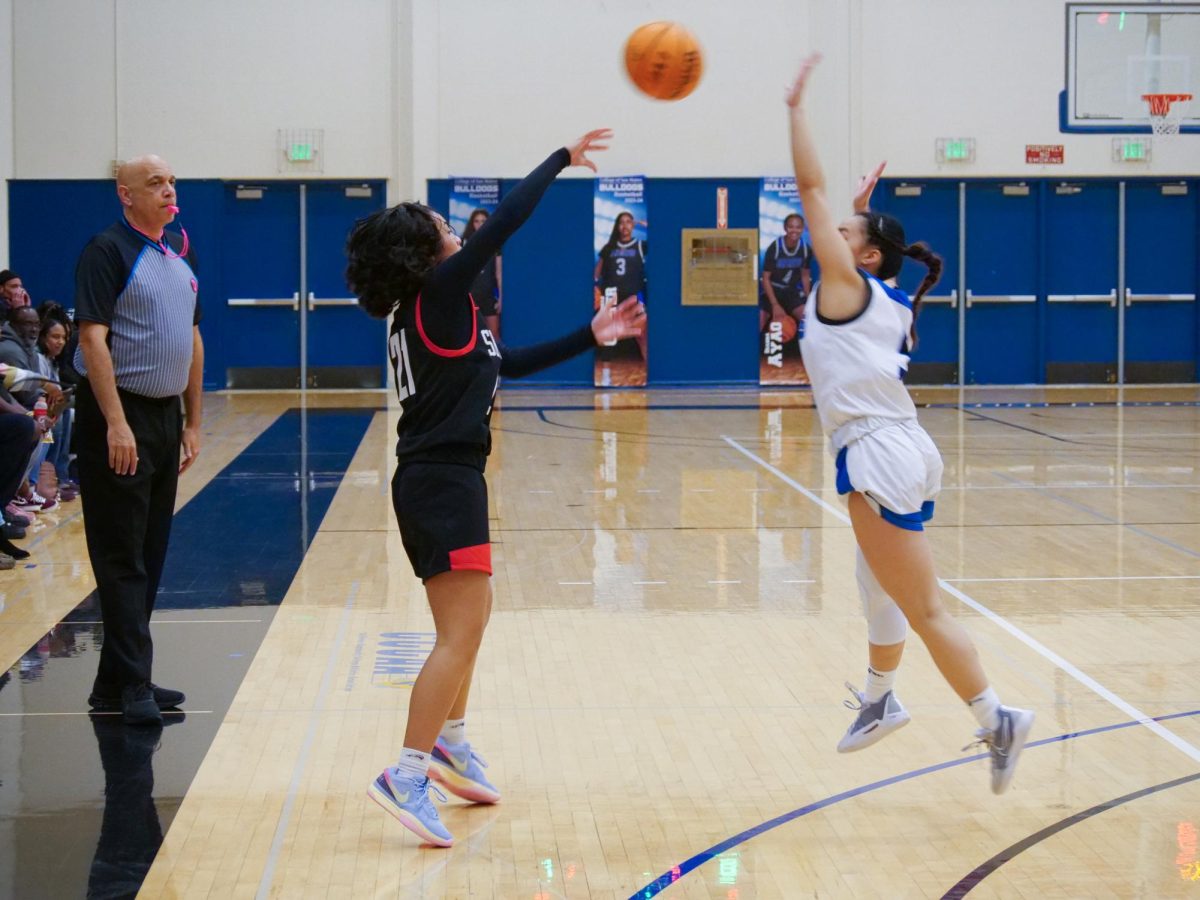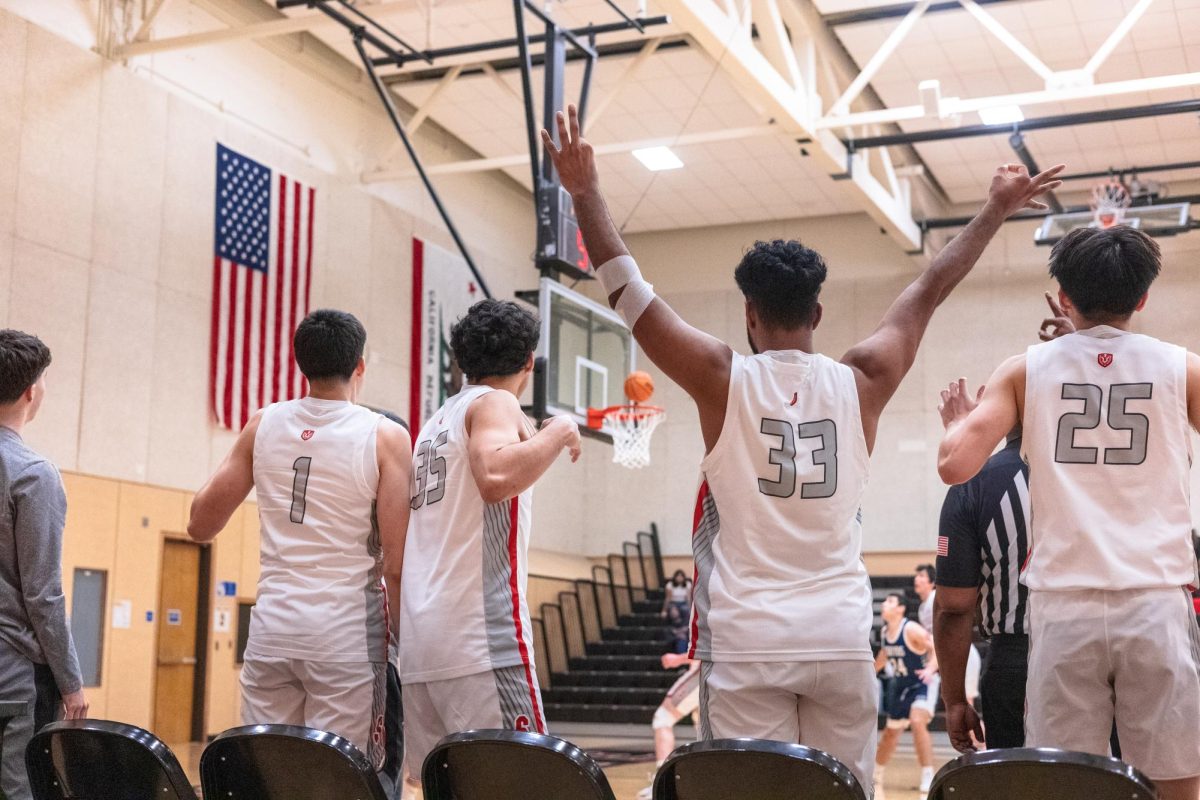In Skyline College’s gymnasium, among the echoes of shuttlecocks and the swift movements of players’ rackets, lies a sport overlooked by many in the broader college sports scene. Every Tuesday and Thursday, the women’s badminton team takes over Skyline’s gymnasium, showcasing their competitive and passionate spirits as they face head-to-head against other community colleges.
On April 4, at Skyline College, the women’s badminton team battled against City College of San Francisco in two rounds of singles and two rounds of doubles, exhibiting their determination and love of the sport.
For many players, it is their first time playing badminton so earlier in the season, a lot of time was dedicated to introducing players to the rules and regulations of the game. Despite the obstacle of being unfamiliar with the sport, the coaches emphasized that the players exhibit their willingness to make contributions to the team.
Reflecting on her experience as a player on the badminton team, Thifanie Gracia expressed how teamwork extends beyond the court, enriching her social life. She highlighted a common benefit of participating in a team sport, which is bonding with peers and finding a sense of belonging. Gracia revealed that the team often bonds over post-game and practice meals, fostering a sense of community among the team.
While the badminton team stands as a welcoming community, they still face the challenge of limited practice hours and resources. Student-assistant coach Kadae Aung is from Burma, where badminton is more widely known and taken seriously. Drawing from his experiences coming from a badminton family, he guides players in perfecting their form and technique.
In a conversation with Aung, he shed light on the disparity in resources within the athletics department, explaining that badminton often receives less priority compared to mainstream sports like baseball and basketball. Aung mentioned that the athletic department bought the team new rackets and shuttlecocks but failed to give the team enough hours in the gym to use them.
“For a typical practice, it should be two to three hours a session, three sessions a week minimum,” Aung said.
Instead, the team practices for one hour for two sessions at the beginning of the week. He believes that if badminton was more mainstream and gained more recognition as a sport, the badminton team would have more students willing to participate.
Alternatively, head coach Chris Watters only had good things to say about the way the athletics department has been prioritizing badminton.
“Our athletic department has provided us everything we need to be successful this season,” Watters said.
Despite this being Watter’s first year as a badminton coach, he has experience as the head coach of Skyline’s women’s basketball team for 10 seasons, which he leverages to drive the badminton team toward success. Watters may not know much about badminton, but he feels his transition as head badminton coach has gone smoothly thanks to the dedication of the players and assistant coach Aung.
Looking ahead, Aung aims to recruit badminton players directly from high school. As the season progresses, he said he wants to dedicate his time to developing players and guiding them as much as he can.
“I think our main goal is to just learn about the game and enjoy it,” Watters said.
Although the badminton team is overlooked by the broader Skyline community, the players and coaches have unwavering motivation to work with their limited resources and continue striving for success on the court.



